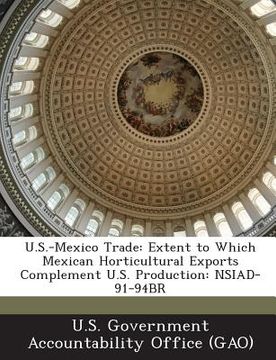U.S.-Mexico Trade: Extent to Which Mexican Horticultural Exports Complement U.S. Production: Nsiad-91-94br (en Inglés)
Reseña del libro "U.S.-Mexico Trade: Extent to Which Mexican Horticultural Exports Complement U.S. Production: Nsiad-91-94br (en Inglés)"
Pursuant to a congressional request, GAO reviewed U.S.-Mexican agricultural trade, focusing on how major Mexican horticultural commodities complement, supplement, or compete with U.S. domestic production. GAO found that: (1) there was a clear pattern of complementary production for some major Mexican exports, and significant overlap in harvest and marketing seasons for others; (2) cantaloupes, watermelons, table grapes, and asparagus had complementary production seasons; (3) both countries produced squash and mango crops at the same time, but the crops competed only to a limited extent; (4) Mexican-produced tomatoes, cucumbers, bell peppers, and strawberries competed directly with U.S. products; (5) the existing seasonal tariff structure was instrumental in preserving the complementary nature of horticultural trade between Mexico and the United States; (6) eliminating tariffs could undermine existing horticultural trade patterns, since Mexico had such advantages as lower-priced land and labor; (7) despite rising Mexican exports and sizable seasonal overlap, U.S. production of most of the horticultural commodities increased between 1980 and 1990 due to increased demand; (8) innovative agricultural technology helped keep the United States competitive despite relatively higher labor costs; and (9) U.S. consumers benefitted from increased fruit and vegetable imports in terms of greater supplies, greater variety and, in some markets, lower prices.

